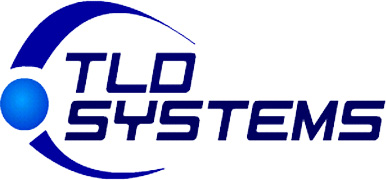Consider an internal audit referred to as a compliance audit of your chart notes/medical record documentation and billing/coding to determine if you are potentially at risk of an audit or clawback by CMS, the Centers for Medicare and Medicaid Services or by a commercial health insurance carrier and determine what steps need to be taken to mitigate those risks. It is inevitable that in all likelihood a provider will be audited. An audit should never be more than an inconvenience. It should not be a life-changing event. If a clawback takes place, it would be bad enough if face value reimbursements were requested after the fact. Unfortunately, this is usually not what occurs. The assumption is that since the billing, coding and documentation did not support the claim(s) that were filed, the requested amount to be repaid will be far greater. Interest, penalties and an extrapolation is instituted referred to as the Statistically Valid Random Sample or SVRS that will result in an amount that needs to be repaid that is far greater than what was initially reimbursed.
Misnomers in the World of Billing, Coding, and Reimbursement
1. When it comes to audits, “they” only go after the “Big Guy.” Of course, the providers that generate the highest reimbursements aka “The Big Guy” tend to be audited at a high rate based upon the fact that the more that you are being reimbursed, the greater is the likelihood that something inappropriate has been being billed.
- However, most audits are based upon trends and patterns. If for example a podiatrist is billing for something more frequently than the other podiatrists in the same state and/or nationally or is billing for something differently than the other podiatrists in the same state and/or nationally, this very often can trigger an audit.
2. “I got my information from the Medicare (or the carrier) representative, so the information that I received has to be correct.”
Never assume that the health insurance carrier employee that you speak to on the telephone is astute enough that the information that they are providing you with is accurate and complete.
3. “I’ve got it in writing.”
You absolutely, positively need to have the most complete and up to date rules and regulations in your possession. You need to go to the website of your Medicare Administrative Contractor and access the LCD and the associated article regarding billing and coding for the specific issue at hand. If your Medicare Administrative Contractor does not have an LCD for the issue at hand, go online and access the Medicare Coverage Database or MCD for the most up to date and accurate information that needs to be followed for a specific issue.
4. “JUST BECAUSE YOU GOT PAID MEANS THAT YOU DID EVERYTHING RIGHT.”
Getting reimbursed is easy. If you fill out the CMS-1500 Claim Form or the electronic equivalent correctly and the ICD-10-CM code(s) qualify the CPT and E/M codes for reimbursement, unless there is a glitch in the system, you will get reimbursed. It is not until after the fact that if an audit is performed that inappropriate coding, billing and documentation will become an issue.
There have been various audits taking place that I have recently seen and reviewed.
- - The Inappropriate Use of the 25 Modifier
- - The inappropriate Use of the 59 Modifier
- - 11720/11721 (nail debridement)
- - 11730 (nail avulsion)
- - Wound Care Codes
- - 10060/10061 (I&D of abscess)
- - 11050 series (paring of skin lesions) (corns/calluses)
- - Orthotics Codes
- - Injection codes (Morton’s neuroma, plantar fascitis)
- - 11305 Series of Codes
- - Ankle Foot Orthoses
- - Extra depth, therapeutic shoes and heat molded or custom inserts
OIG Workplan
The Office of Inspector General (OIG) Work Plan outlines the OIG's audit and evaluation projects for the fiscal year, including those related to medical coding and billing. It serves as a roadmap for identifying areas of potential fraud, waste, and abuse within the healthcare system, with a focus on ensuring accurate and appropriate billing practices.
Key aspects of the OIG Work Plan related to medical coding:
- Focus on Compliance:
The OIG Work Plan is a key resource for healthcare providers to understand areas of focus for audits and investigations related to medical coding and billing.
- Risk Areas:
The Work Plan identifies specific risk areas, such as documentation and coding issues, that the OIG will be scrutinizing. For example, audits may focus on the accuracy of diagnoses, procedures, and other related information in medical records.
- Specific Examples:
The Work Plan may highlight specific diagnoses or conditions that have been flagged for review. For instance, audits might examine cases with diagnoses of diabetic foot ulcers and venous leg ulcers and the application of skin substitutes or CTPs.
- Importance of Accurate Coding:
The Work Plan underscores the importance of accurate medical coding for proper reimbursement and patient care. Inaccurate coding can lead to overpayments, underpayments, and even potential fraud investigations.
- Risk Adjustment Audits:
The Work Plan may also include reviews of risk adjustment coding, which is crucial for Medicare Advantage plans. These audits aim to ensure that risk scores are accurate and reflect the true health status of enrollees.
- Remote Patient Monitoring:
The OIG is also looking at remote patient monitoring practices and billing, ensuring that these services are appropriately used and billed according to guidelines.
- Consequences of Non-Compliance:
The OIG can take various actions against providers who violate coding and billing rules, including civil monetary penalties, exclusion from federal health programs, and even criminal charges in cases of fraud.
Preparing for OIG Audits:
- Review the Work Plan:
Stay informed about the latest updates to the OIG Work Plan to understand areas of focus and potential risk areas.
- Conduct Internal Audits:
Regularly audit your own coding and billing practices to identify and correct any errors or inconsistencies.
- Ensure Accurate Documentation:
Maintain thorough and accurate documentation in medical records to support all claims.
- Stay Updated:
Keep abreast of the latest coding guidelines and regulations, including those related to new technologies like remote patient monitoring.
- Implement a Compliance Program:
Establish a robust compliance program to ensure adherence to all applicable coding and billing rules.
By understanding the OIG Work Plan and taking proactive steps to ensure compliance, healthcare providers can minimize the risk of audits and investigations, protect themselves from potential penalties, and maintain the integrity of the healthcare system.
If you are interested in having a compliance audit performed, access my website Drmikethecoder and shoot me an email. I would be pleased to discuss this important issue with you.
Michael G. Warshaw, DPM, CPC
THE 2025 PODIATRY CODING MANUAL IS STILL AVAILABLE in either Book or Flash-drive formats. It has been completely updated for the calendar year 2025. Many offices across the country consider this to be their “Bible” when it comes to coding, billing, and documentation. The price is still only 125.00 including shipping! To
purchase, access the website drmikethecoder.com.
No credit card? No problem! Just send a check for 125.00 to the following address:
Dr. Michael G. Warshaw
2027 Bayside Avenue
Mount Dora, Florida 32757



Read Comments